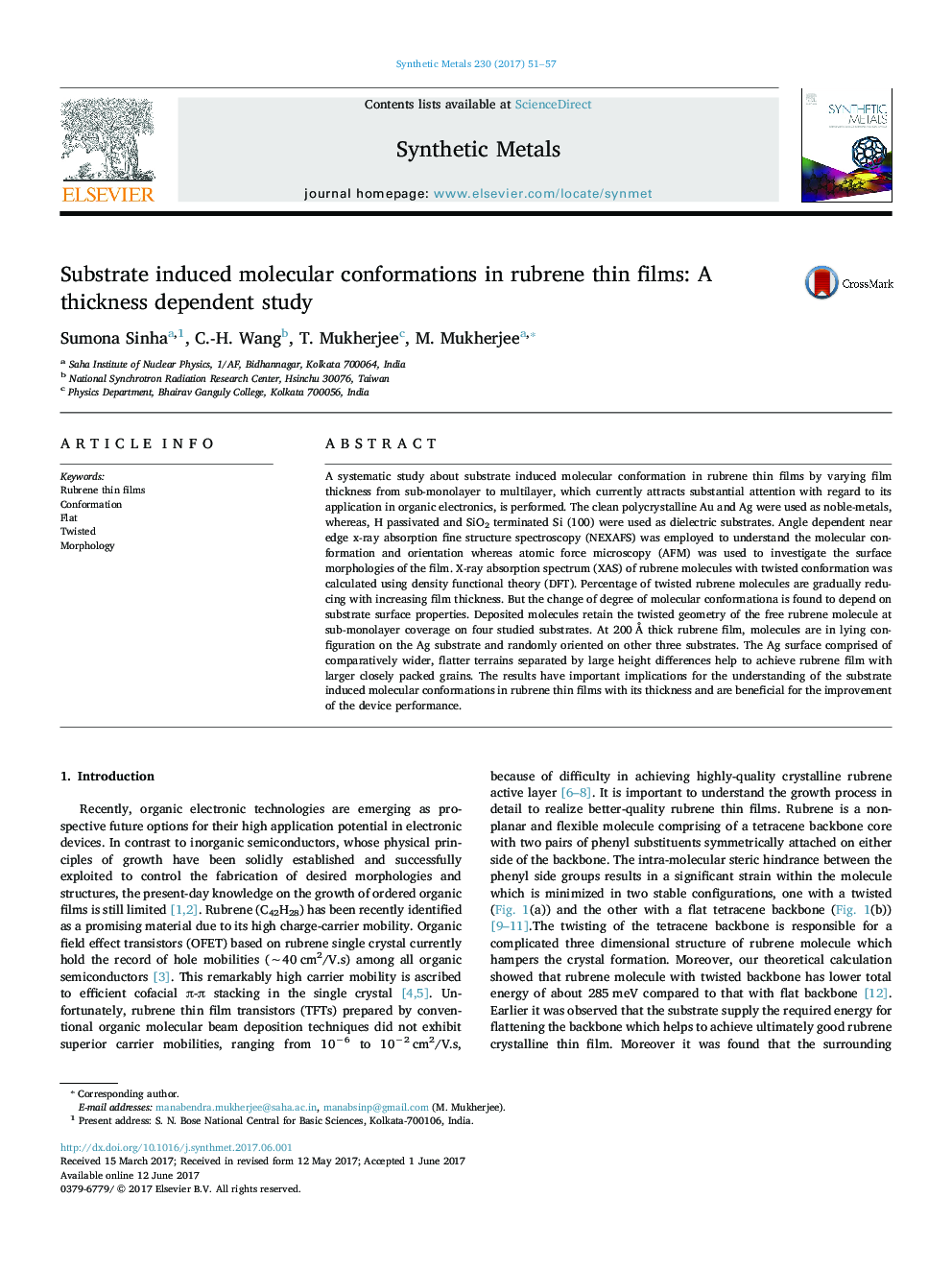| Article ID | Journal | Published Year | Pages | File Type |
|---|---|---|---|---|
| 5435387 | Synthetic Metals | 2017 | 7 Pages |
â¢Study about substrate induced molecular conformation in rubrene thin films by varying film thickness.â¢Deposited molecules retain the twisted geometry of the free rubrene molecule at sub-monolayer coverage.â¢Rubrene molecules are in lying down configuration on Ag substrates at 200 à thick films.â¢Percentage of twisted rubrene molecules are gradually reducing with film thickness.â¢Ag surface comprised of wider, flatter terrains; help to achieve rubrene film with larger closely packed grains.
A systematic study about substrate induced molecular conformation in rubrene thin films by varying film thickness from sub-monolayer to multilayer, which currently attracts substantial attention with regard to its application in organic electronics, is performed. The clean polycrystalline Au and Ag were used as noble-metals, whereas, H passivated and SiO2 terminated Si (100) were used as dielectric substrates. Angle dependent near edge x-ray absorption fine structure spectroscopy (NEXAFS) was employed to understand the molecular conformation and orientation whereas atomic force microscopy (AFM) was used to investigate the surface morphologies of the film. X-ray absorption spectrum (XAS) of rubrene molecules with twisted conformation was calculated using density functional theory (DFT). Percentage of twisted rubrene molecules are gradually reducing with increasing film thickness. But the change of degree of molecular conformationa is found to depend on substrate surface properties. Deposited molecules retain the twisted geometry of the free rubrene molecule at sub-monolayer coverage on four studied substrates. At 200Â Ã thick rubrene film, molecules are in lying configuration on the Ag substrate and randomly oriented on other three substrates. The Ag surface comprised of comparatively wider, flatter terrains separated by large height differences help to achieve rubrene film with larger closely packed grains. The results have important implications for the understanding of the substrate induced molecular conformations in rubrene thin films with its thickness and are beneficial for the improvement of the device performance.
Graphical abstractDownload high-res image (136KB)Download full-size image
